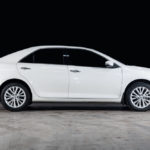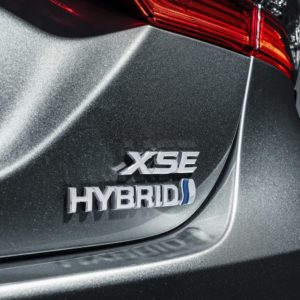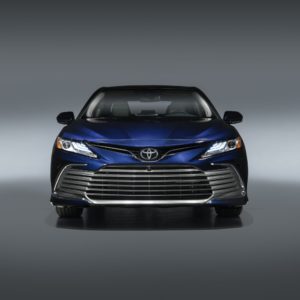Toyota’s best-selling midsize sedan has captivated American drivers for over 35 years. In fact, around 400,000 Camrys were sold in the US in the last year. For a car that has been called plain or boring by some, the Camry’s popularity is showing no signs of slowing down. Let’s take a closer look at how a Japanese export evolved into one of America’s favorite vehicles.
The beginnings of the “Kanmuri”
The Toyota Camry was first unveiled in the US as a mid-1983 model. It was a front-wheel-drive that initially came as a hatchback and a sedan. The name Camry is a variation of the Japanese word, “kanmuri” which translates to “crown.” True enough, the Camry would become Toyota’s crown jewel for decades to come.

The first-generation Camry came with a 1.8-liter or 2.0-liter gas unit, mated with a five-speed manual or a four-speed automatic transmission. A 1.8-liter turbodiesel I-4 was also available, but it came exclusively with a manual. The V10, as it was fondly called, followed the box-shaped trends of the 80s.
Its debut in the US market signaled the beginning of a rivalry with Honda Accord which would last decades. The Camry quickly made its mark as a sturdy, safe, and quiet-driving vehicle which proved a hit with American drivers. Soon enough, Toyota brought its manufacturing stateside with a factory in Georgetown, Kentucky.
Between 1987 to 1991, the second-generation Camry began to offer a V-6 engine that replaced its diesel option. The hatchback was eventually replaced by a wagon body style, appealing to families who needed the extra space in the car. Its styling became sleeker and featured softer lines. The 1987 model became the first and last Camry to come with an all-wheel-drive system.
From compact car to midsize sedan
With three out of four Camrys sold in the US coming from the Kentucky plant, Toyota decided to switch directions and tailor the 1992 Camry to suit the preferences of American drivers. This resulted in a larger model that featured a streamlined concept.
Toyota focused on making the Camry bigger, safer, and more powerful than ever. It also received a facelift with a new grille and an upgraded air conditioning system. The third-generation model came with a standard 2.2-liter I-4 engine or a 3.0-liter V-6 option. With these changes, the North American model became a totally different vehicle from the Japanese versions.
A Camry Coupe was later introduced to compete with the Honda Accord Coupe but was discontinued in the 1996 model year. However, this was not the last we’d see of the coupe body style. The two-door version of the Camry made a comeback in the 1999 model year with the Camry Solara.
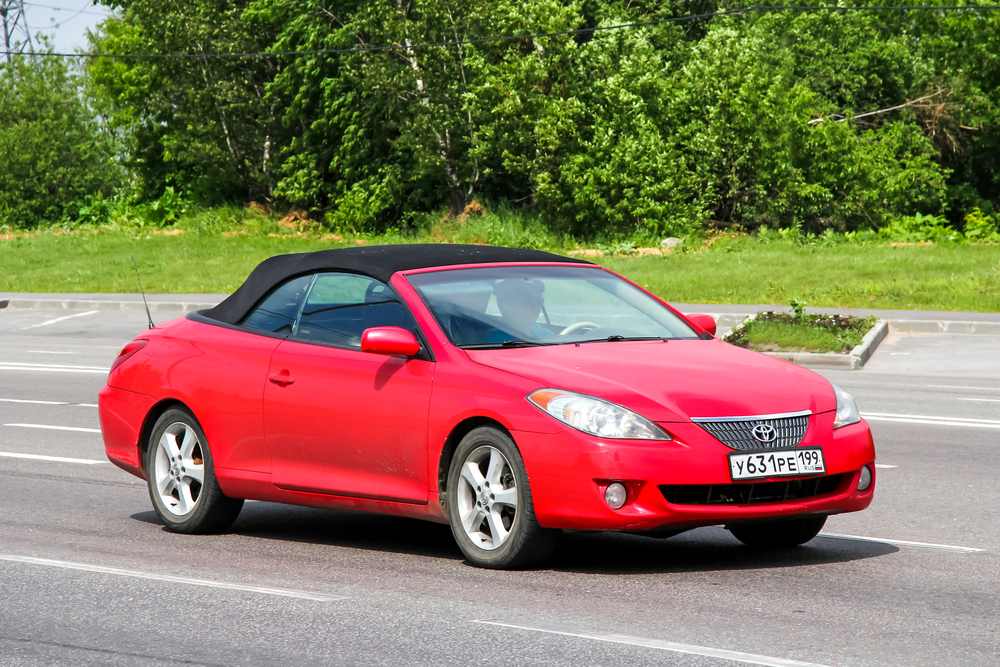
Its sporty styling differentiated it from the four-door versions, making it more successful than the Camry Coupe. A convertible version of the Solara was later introduced. Despite a redesign during its second-generation, the Solara was eventually discontinued in 2008.
The succeeding generations of the Camry continued to thrive in sales thanks to its no-nonsense design and reliable performance. It became known for its ample cargo space, both in its trunk and interiors when the rear seat is folded. The wagon option eventually dropped due to the rise of the minivan and crossover segments.
2007 Motor Trend Car of the Year
In 2006, Toyota made a splash by launching one of the fastest midsize sedans available with the 2007 Camry. Not only did it get a power boost, but the Camry also sported a bigger body with a softer look. Under the hood, it boasted a 268-hp 3.5-liter V-6 engine paired with a six-speed automatic transmission.
The first hybrid version of the Camry was also launched in the sixth-generation model year at the 2009 North American International Auto Show (NAIAS). The Camry Hybrid went head to head with other hybrids in the midsize segment such as the Chevrolet Malibu, Ford Fusion, Honda Civic, and Nissan Altima.
It wasn’t far behind its V-6 counterparts with a 2.4-liter I-4 paired with an electric motor which as a combined output of 187 hp. The hybrid variant eventually got an upgrade in the seventh-generation model year, bumping its combined output up to 200 hp.

America’s best-selling car
By 2012, the Camry took on a sophisticated design punctuated by spacious interiors and improved driving dynamics. By this time, it has been America’s top-selling car for nine years straight and a best-seller for 13 out of the past 14 years. There is no doubt that the Camry has solidified its place as the benchmark for quality and dependability in the midsize segment.
The Camry may not make the hearts of speed enthusiasts flutter, but at the end of the day, it focuses on two things that truly matter—comfort and reliability. Since its debut, the Camry has gone head to head with the Honda Accord. But unlike Honda which focused on driver comfort, Toyota won over the hearts of American families by highlighting passenger comfort with its spacious back seats and feature-packed cabin.
Now in its eighth generation, the Toyota Camry continues to be a practical choice for solo drivers and families alike. The 2019 Camry is available in five different trim levels: L, LE, SE, XSE, and XLE. Notable upgrades from the 2018 model include Apple CarPlay and Wi-Fi hotspot capability which come as standard in all models.
The standard 2.5-liter four-cylinder engine is paired with an eight-speed automatic. The same engine is paired with an electric motor that produces 208 hp in its hybrid variant. In tests, the four-cylinder Camry SE is shaping up to be the most economical non-hybrid, even beating the fuel economy of the Camry XLE hybrid. On the other hand, the XLE and XSE models come with a 301-hp V-6.
True to its reputation as a reliable family sedan, the latest Camry doesn’t kid around when it comes to safety. All Camry models come standard with Toyota Safety Sense, the automaker’s driving assist technology. The 2019 model received full marks in vehicle safety from the National Highway Traffic Safety Administration (NHTSA) and the Insurance Institute for Highway Safety (IIHS).
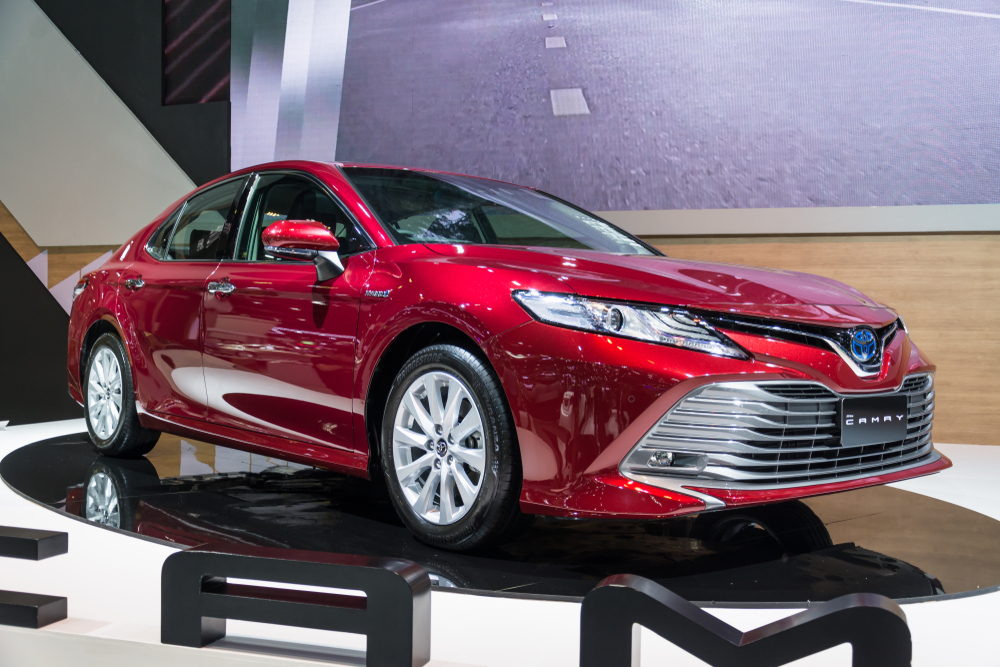
The Camry’s legacy continues
Based on yearly trends, the demand for midsize family cars will continue to rise. Even with new contenders such as the Nissan Altima, Ford Fusion, and Hyundai Sonata; it will be difficult to beat the Camry as the country’s favorite family sedan. As long as Toyota sticks to its formula of technology, safety, and quality engineering; the Camry will hold its place as the car to beat for decades to come.
Where to Get Replacement Parts for Your Toyota Camry
Even though it’s America’s darling, the Toyota Camry is still a vehicle that will need repairs and maintenance work over time. As such, it’s important to find a place where you can get high-quality replacement parts to maximize its lifespan. Luckily, CarParts.com has a wide array of auto parts for you to choose from!
Why waste time driving between stores when you can order the parts you need right off your mobile device or computer? Shop for OE-quality parts online, and get your order delivered straight to your doorstep with just a few clicks.
Our website has a built-in vehicle selector that lets you input your car’s year, make, and model to ensure that the part you’re ordering matches your ride’s specifications. And in case you have any questions, we have a friendly and helpful customer service team that offers customers round-the-clock support.
Maintain your Toyota Camry, and keep it on the road for a long time by ordering replacement parts from CarParts.com.
Any information provided on this Website is for informational purposes only and is not intended to replace consultation with a professional mechanic. The accuracy and timeliness of the information may change from the time of publication.


